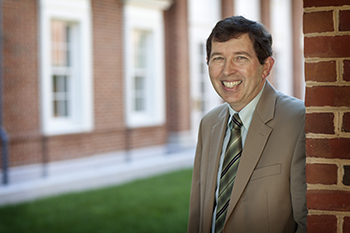Virginia Study Highlights School Safety Perceptions
 ARLINGTON, Va. — A report released by the University of Virginia Curry School of Education shows a majority of Virginia high school students feel both safe and supported in their schools. The Virginia Secondary School Climate Survey, developed by a team of researchers led by professor Dewey Cornell Ph.D., was administered to 48,027 students in grades nine through 12, as well as 13,455 teachers. Respondents represented 323 public high schools, and completed the anonymous online surveys earlier this spring.
ARLINGTON, Va. — A report released by the University of Virginia Curry School of Education shows a majority of Virginia high school students feel both safe and supported in their schools. The Virginia Secondary School Climate Survey, developed by a team of researchers led by professor Dewey Cornell Ph.D., was administered to 48,027 students in grades nine through 12, as well as 13,455 teachers. Respondents represented 323 public high schools, and completed the anonymous online surveys earlier this spring.
Survey questions focused primarily on school climate, including perceptions of disciplinary practices, student support efforts and degree of student engagement, as well as safety conditions such as bullying, teasing, physical assault and gang activity. Dr. Cornell said in a statement that the findings will help gauge schools’ strengths and weaknesses in terms of student and teacher safety, and stimulate discussions and clarification on how schools deal with student misbehavior.
According to the report, students largely believe that teachers and school officials are invested in their success and wellbeing. Eighty-six percent of students reported that teachers want all students in their school to do well, and 74 percent said teachers care about students and treat them with respect. Likewise, teachers almost unanimously described their relationships with students as supportive and respectful.
Student views on their school climate, however, were less cohesive. Just 67 percent of students reported that their school’s rules are fair, with 61 percent agreeing that rules were enforced equally. Nearly 80 percent noted that race and ethnicity had no impact on disciplinary situations.
Perhaps surprisingly, 84 percent of students reported that they like school, with 81 percent declaring they are proud of their institution. Nearly 100 percent of students surveyed expected to graduate.
Questions concerning safety conditions and perceptions of personal safety received less student support, though most (82 percent) reported that they feel safe in their schools. Despite this number, 38 percent of students reported being bullied, and 67 percent reported being teased about their physical appearance. An additional 40 percent reported being targeted for their sexual orientation.
A slightly higher percentage of teachers, more than 90 percent, reported feeling physically safe at their schools, though only 72 percent were satisfied with the security measures currently in place. Twenty-eight percent reported worries that their school would experience a shooting.
This fear may not be unfounded, as the study also showed that issues like theft and violence are still frequent concerns for many students. Thirty percent of students reported being victims of theft, while 17 percent have suffered physical violence such as hitting or pushing. More than 20 percent have been threatened with such violence, though less than 20 percent of affected students reported the abuse.
“There is so much coverage of school violence that we think it is important to point out some good news about the overall safety of our schools,” Professor Cornell said in a statement. “Both students and teachers report feeling safe at school, and the incidence of physical violence is very low. At the same time, we know that bullying and teasing can be a seedbed for acts of violence and so it is important for schools to address these kinds of problems before they escalate.”
A summary of the survey can be viewed at: http://www.dcjs.virginia.gov/vcscs/documents/Exec%20Summary%20of%20State%20Technical%20Report%20for%202014%20High%20School%20Survey%207-30-14.pdf
